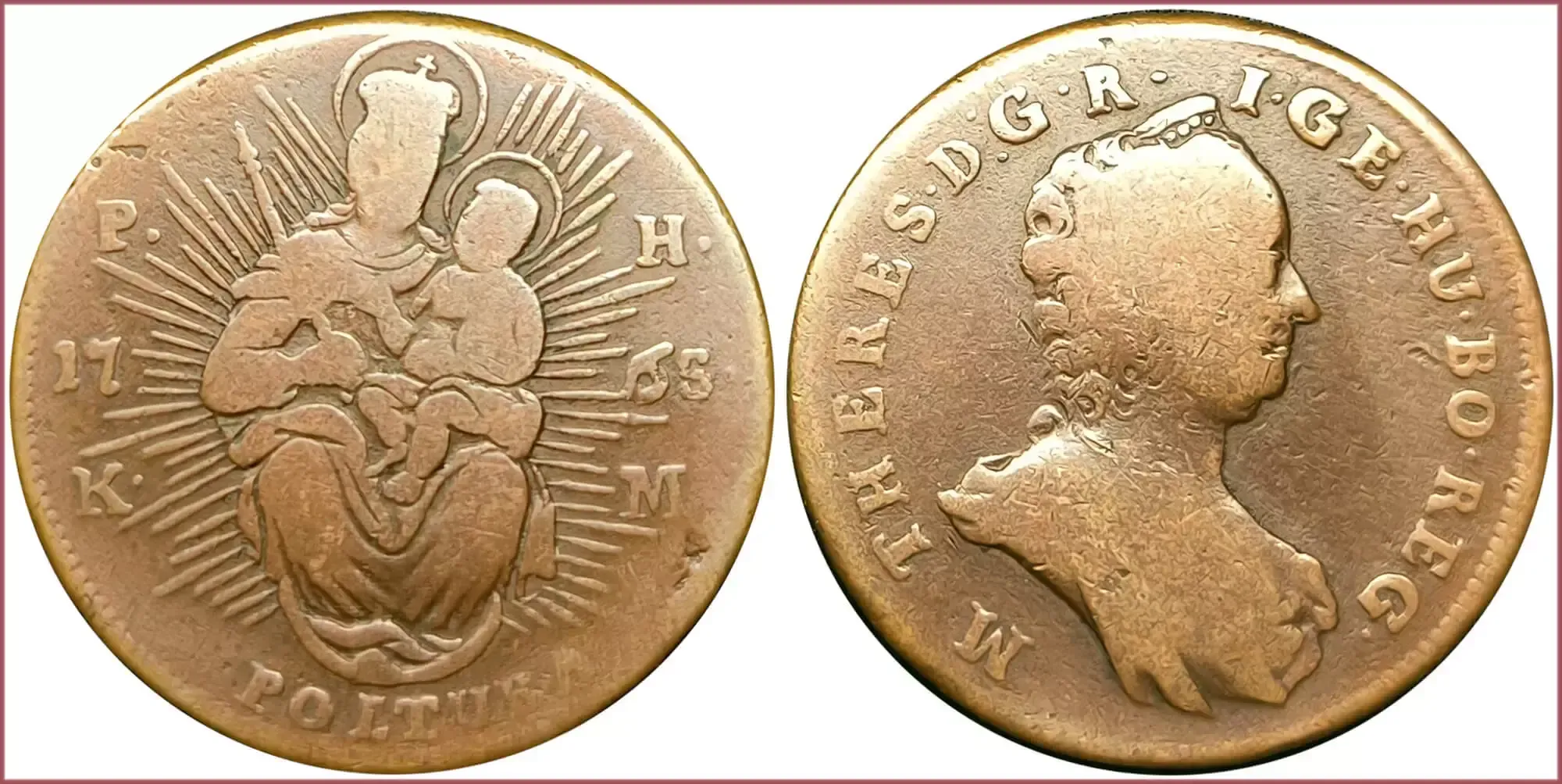POLTURA: COIN OF HUNGARY
Poltura, 1765: Kingdom of Hungary
Maria Theresa — ruler of the Habsburg dominions from 1740 until her death in 1780. She was the sovereign of Austria, Hungary, Croatia, Bohemia, Transylvania, Mantua, Milan, Galicia and Lodomeria, the Austrian Netherlands, and Parma...
POLTURA.
P. H. - K. M.: Patrona Hungariae (Latin for Saint Mary as "Patroness of Hungary"), while the letters KM, according to most numismatic sources, indicate the Kremnica Mint... however, according to other sources, these coins were minted at Smolnik (also Slovakia). Not clear...
Mary, mother of Jesus (Saint Mary).
M · THERES · D : G · R · I · GE · HU · BO · REG — Maria Theresia, Dei Gratia Romanorum Imperatrix, Germaniae, Hungariae, Bohemiae Regina (Maria Theresa, by the grace of God, Empress of the Romans, Queen of Hungary and Bohemia).
Portrait of Maria Theresia Walburga Amalia Christina.
Type of poltura coin without "S" under the portrait of the Empress.
Mintage: 3.967.000.
- Copper: 30 mm - 15.30 g
- Reference price: 8$
COIN POLTURA — WHERE & WHEN (coins catalog: by names & emitents)
- KINGDOM OF HUNGARY (17th-18th centuries): poltura = 1,5 krajczár = 1/2 garas
- PRINCIPALITY OF TRANSYLVANIA (17th-18th centuries): poltura = 1,5 krajczár = 1/2 garas
- KINGDOM OF PRUSSIA (1744): poltura = 1,5 kreuzer
POLTURA as coin name.
Poltura — historical European first silver, later copper coin of the 17th and 18th centuries. It was equal to 1,5 kreuzer (or rather, krajczár, since we are talking mainly about a Hungarian coin).
Silver poltura was minted in the Principality of Transylvania as an analogue of Polish poltorak from the middle of the 17th century. It used both on the territory of Transylvania and on Hungarian lands. At the beginning of the 18th century first copper poltura coins appeared.
During the national liberation movement of the Hungarian people against the Habsburgs under the leadership of Ferenc II Rákóczi (Prince of Transylvania), poltura silver coins were first issued too (now rare coins), later — copper. These coins contained Latin inscription PRO LIBERTATE (for liberty). The most common denomination was the ten poltura coin, which was colloquially called "libertás".
The predominant motif for poltura coins is the Saint Mary with baby Jesus in her arms. The most massive emission of such coins fell during the reign of Maria Theresa.
In 1775, minting of poltura was stopped.
Also poltura coins in the middle of the 18th century were issued by the Prussian king Frederick II for Silesia (during the wars with Austria for this region).
The name poltura is obviously related to its equivalence to one and a half krajczár. According to some sources, the prototype of the coin was the Polish poltorak (a coin equal to one and a half grosz). In Hungarian, "one and a half" is by no means translated as a consonant term. Therefore, the version about the origin of the name poltura from the name of the above-mentioned Polish coin is much more likely. That is, the coin name poltura is borrowed.

